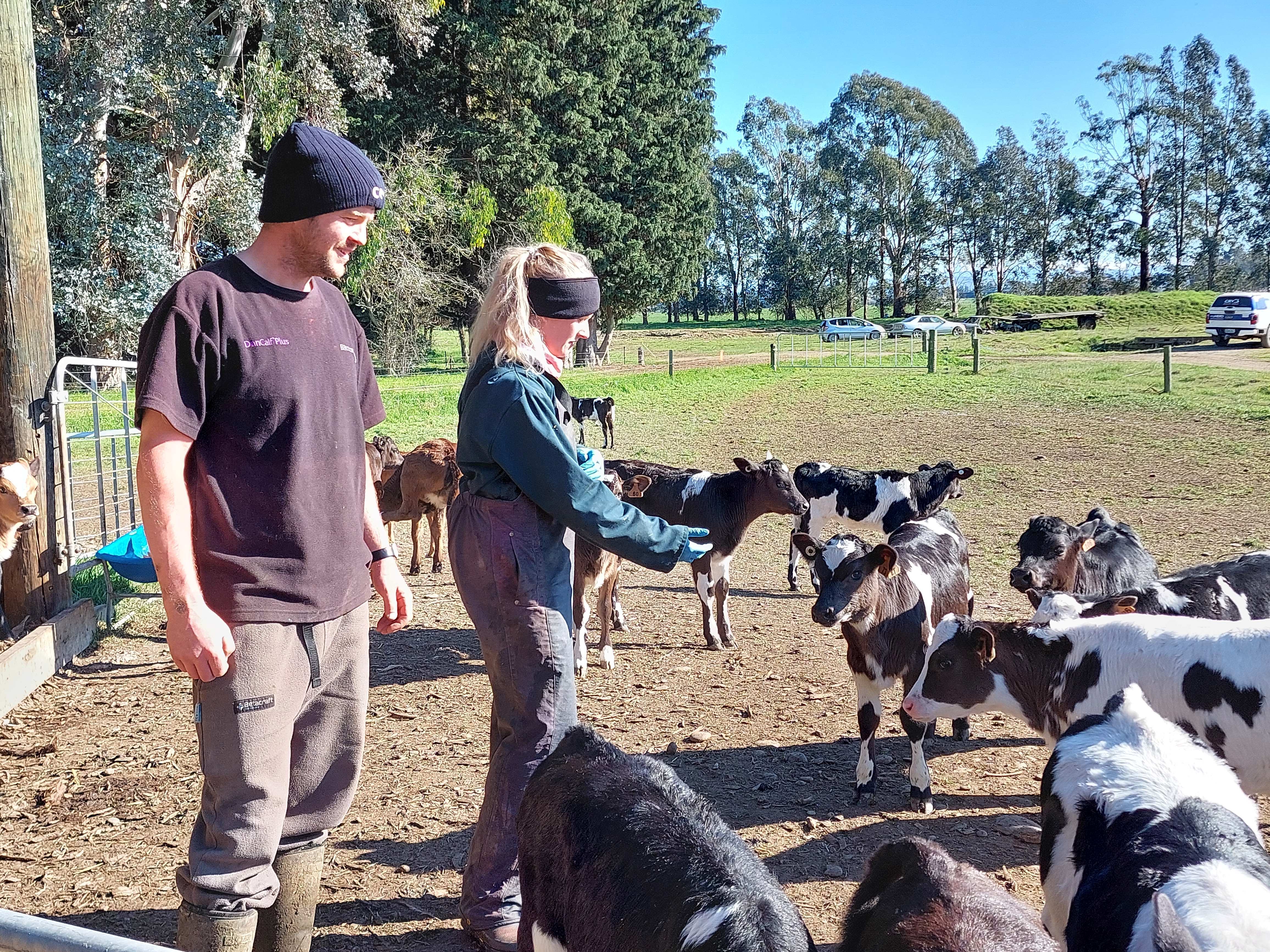Their advice to other farmers: Use sexed semen on your best cows to breed the herd you want faster and use beef semen on the balance of your herd to produce a high-value dairy-beef calf.
Arjan Van’t Klooster, his wife Kelsi, and two boys Kees (4) and Finn (1) farm 3,500 cows across three dairy farms near Glenavy in Canterbury, supplying Fonterra. They share milk 1,450 cows on one 360-ha farm, own a herd of 950 cows milked on a 270-ha platform, and have share milkers milking the third herd of 1350 cows on another 360-ha property.
They average 450 to 550kgMS per cow across the farms. Arjan says the lower production farm of 450kgMS is a system three, while the higher producing farms averaging between 500kgMS and 550kgMS are between a system four and five.
Using CRV genetics Arjan says their goal is to breed a cow around 500 to 550kgs that can do 100 percent of her body weight in production. Given their systems’ high feed inputs, efficiency is key in everything they do.
“We found our genetics were starting to make our herds a bit too big. We had an average live weight of 670kgs for a while which is much less efficient. We also found the bigger Friesians were breaking down, so we have started to pull that size back to meet our goal,” says Arjan.
For the first three weeks of mating, they artificially inseminate about 60 percent of the total herd with sexed semen, choosing their best-producing cows and heifers that meet their type requirements for breeding replacements. They then use dairy beef semen, transitioning to Wagyu, and finally a short gestation beef on the balance of the herd. The total mating period takes about nine weeks.
“Using dairy beef and the Wagyu bulls gives us a high-value dairy-beef calf and reduces our number of bobby calves so there is less waste and better animal welfare,” says Arjan.
“We focus on the efficiency and fertility of our herd to minimise waste on our system and that’s a big driver for using sexed semen. We can drive that genetic gain in our herds by using specific bulls for our top genetic cows and heifers so we can be assured of no bobbies.”
He says they have been maintaining and improving production each year, even as they have seen their cow size reduce to around 550kgs.
“We’ve done a few things on the farms as we have looked to drive efficiency. But in terms of maintaining and growing our production, I would put that purely down to the genetics we’re getting from CRV.”
Arjan says they have no real concerns about their in-calf rate using sexed semen. They use cow collars on all the herds, except their heifers where they use Estrotect™ breeding indicators.
“The collars and Estrotect patches have been great for clearly identifying cows and heifers in heat and ready for mating,” says Arjan.
Their herds of 950 cows and 1,350 cows are also part of CRV’s progeny testing programme, which Arjan says has been instrumental in identifying high-quality bulls for those herds. It also means their entire herds are DNA tested so they can be sure of the genetics they have.
Arjan says being part of CRV’s progeny testing programme means the stress of choosing bulls is removed and they get a good selection of high-quality bulls. However, he does nominate sires for his heifers.
“I nominate the bulls that go over the heifers because I don't want a heavy calving bull,” says Arjan. “For the heifers it's 100 per cent nominated sexed semen straws because those heifers are going to give me my quickest genetic gain.
“Overall, our experience with CRV has been excellent. CRV is playing a crucial role in driving genetic improvement across our herds and ultimately contributing to our farms’ success.”
For tips on sexed semen management click here.

